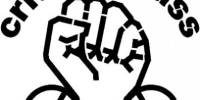The Grameen (grameen means rural) Bank of Bangladesh has innovated a mechanism under which credit can be provided to the poorest of the poor on a group liability basis instead of any collateral. Based on this principle, over the last decade, the bank has been successfully operating with an unprecedented loan recovery rate. Although from the point of view of profits, the Grameen Bank is not yet a viable institution, empirical evidence suggests that the bank’s credit program has significantly improved the socioeconomic conditions of its borrowers. The Grameen Bank’s success story in the alleviation of poverty in Bangladesh has resulted in widespread attempts of its replication in many other countries including the United States and Canada. The spread of the Grameen Bank idea around the world has drawn keen attention from researchers, policy makers and agencies interested in rural development.
The Grameen Bank was created as the result of a research action project. Its board members are members of the community and representatives of government. The member-beneficiaries of the Bank include more than two million women. The Bank works through a structure with different independent levels. Its achievements include the development of housing which meets the needs of the clients.
Grameen Bank is a task oriented credit institution, an autonomous organization owned jointly by the Government and the rural poor. It was created specifically for the purpose of improving the economic status rural landless persons, especially that of the female population, in Bangladesh. It was started as an action research project in search of new alternatives to institutional credit for the poor in view of the lack of access to the existing institutions for the poor. Several factor contributed to this unsatisfactory situation, which include poor knowledge of the credit opportunities, complex and costly formalities for access and an inability to meet the existing norms of credit worthiness as set by the existing formal sector lending institutions due to their inability to produce collateral against loans and poor saving prospects.. As a result the poor are forced to turn to the informal sector of private money lenders for their credit needs. Access to latter is easy, but the cost is very high. The high interest charged by the lender causes further impoverishment and dependency of the poor borrower. The borrower is often encouraged to be a defaulter, whereby his entire mortgage collateral is called in, making him a destitute.
Based on a three year action research project in the village Jobra undertaken by the Chittagong University under Prof. Muhammad Yunus from 1976-79, it was expanded to several districts. In 1983, the Grameen Bank project was transformed into a independent bank by a special Government ordinance. Government of Bangladesh provided 60 percent of the initial share capital, while 40 percent was held by the borrowers of the Bank. Over time the Government share has been reduced to only 7 percent. The Board includes members elected from the shareholders as well as government nominees.
The Bank’s organizational structure is of four tiers with the Branch as the lowest unit. The branch office is supervised by an Area Office and above that are the zonal offices and the head office. It deals directly with the community structures, which comprise of “Groups” of five members each and centers, which contain 2 to 10 groups. A given branch deals with 40 to 60 such centers. Bank’s main innovations include the use of group arrangement to replace the collateral requirements of formal institutions. There is considerable freedom at the second lowest tiers of the area office where loan sanctions are done. The head office provides feedback to the lower levels and deals with the outside institutions and the government. Its role includes resource mobilization for the Bank. Over the last decade the operations of the bank have grown to include over 1000 branches with almost 2 million members covering almost 35000 villages (about 50 percent of total). Cumulative disbursements by the Bank are over Tk 41 billion (US$ 1 billion) with a monthly disbursal of Tk 1.1 billion (US $ 29 million) by 1994. Cumulative disbursal for housing loans has been about 11 percent of total.
Grameen Bank’s success relates to its organizational structure and its style of operations which responds to the local needs. Its credit policy and rules for loan sanctions and the special ‘collateral’ requirements have emerged from the ground realities. It must, however, be understood. This brings in the needed transparency and accountability in the entire process. The collective participatory planning and incorporation of the members at the highest level of decisionmaking in the Board of Directors through a democratic process also contributes to this success.
Grameen Bank’s lending for housing has also evolved out of the needs of the borrowers. Interestingly, the housing issue has been simplified to the barest minimum and focuses on the construction of shelter and sanitary latrine. The construction technology is the conventional, easy and employable by rural hands. Easy to follow construction manual provids the necessary guidance. The main aspect of success relates to the ability to distinguish clearly between need and demand, and the fine-tuning of response to the demand, capacity and affordability of the beneficiary group is characteristic of Grameen Bank’s activities. The housing program is thus not constrained by access to land and utilities, building codes and donors’ conditionalities. The technologies used are conventional and easy. The loan processing is very quick and wide ranges of loan amounts are available determined by the actual need and affordability of the borrower rather than a prescribed scheme. Thus on the whole there is a lot of choice and freedom available to the borrower in the whole process. Most importantly these procedures have evolved out of a participatory process of decision making which reflect both the borrower preferences and the lender pre-requisites.
On the whole the Grameen Bank’s success may be traced to its unique organizational structure, which while being formal and hierarchical also incorporates participatory approaches and provides effective linkages with the community structures, adequate attention is also paid to development of community structures. These in fact are the pivot in the entire delivery of savings and credit services. Its organizational structure is also unique in terms of relationship with the government.
Government’s participation is only at the highest level in the Board and its implicit support is available in resource mobilization as well as the overall functioning of the Bank. In addition despite being a bank of the poor with equity participation by the government, its operations are on the basis of sound business practices, fiscal discipline, transparency and accountability. Thus the courage and vision of the leadership are translated into effective actions and practices, which make the Grameen Bank both effective and viable with a very wide coverage.
Grammen Bank is often identified with its Managing Director and beneficiaries, achived through social mobilization of the target group and sharply focused credit infusion among them for self-reliance programs. Important clues to a feasible model for social and economic upgrading of the poor are present in the organizational formats of the Bank, in the relationship between the Bank and the Government, in the Bank’s programs as well as in its action plans. In the following chapter, experiences are highlighted for lesson to be learned from this experience.
Lessons from Grameen Bank
The GB’s response to the housing deficiencies of the rural poor (and of course also to the root cause of rural poverty) offers important lessons. Some of these are tested and proven models, and others are innovative and significant, at least for societies with similar socio- economic features. The important element of its strategy can be summarized as follows:
- Its concern to creating among the poor realistically achievable demands for social and economic improvement among the poor, who often regarded themselves as beyond rescue.
- In closely matching the supply to the demand in respect size, nature and affordability,
- In identification of the target group for greatest impact, and in focusing sharply infusion of aid to target group, and
- In matching the Bank’s agenda with those of all the actors in the field, namely the government, the donors, the public and the beneficiaries in selection of its program and ensuring their support.
- In maintaining a relationship of trust at all fronts through participatory practices and transparency of dealings.
- In arraigning support of government and local bodies in the development and implementation of the program.
- In sustaining the process of development and progressive extension of the program.
An important feature of its program is its approach*- to the task, characterized by its confidence how something can be done with its recipe, rather than why it cannot be done. This represents a basic element of faith in the integrity and sustenance of the beneficiary group and their right to improvement, in the Bank’s readiness to face a challenge and its force of conviction in Its own creative ability and dedication to make a difference. In banker’s language it is summed up by Dr. Yunus as “Poor are bankable.”
To make this work GB’s prescription is to match its priorities and delivery mechanism to that of the beneficiaries.
















